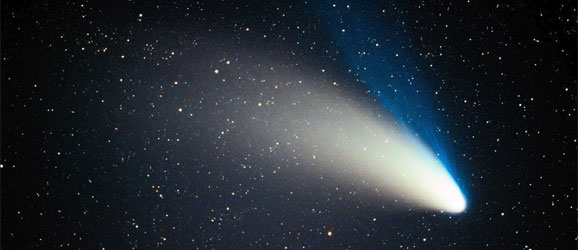Comet That Will Be Visible During Daytime Coming In 2013
This article is more than 2 years old
 Let the show begin! Two Russian amateur astronomers have recently discovered a fiery comet that is expected to pass by the Sun at a really close distance. The effect of the comet’s journey will make for one of the brightest comets since 1965. The comet is said to be so bright that it will be very visible during the daytime without a telescope.
Let the show begin! Two Russian amateur astronomers have recently discovered a fiery comet that is expected to pass by the Sun at a really close distance. The effect of the comet’s journey will make for one of the brightest comets since 1965. The comet is said to be so bright that it will be very visible during the daytime without a telescope.
According to Discovery, Russian amateur Astronomers Artyom Novichonok and Vitali Nevski have discovered this colorful comet far beyond Jupiter’s orbit on September 21st. Astronomers and scientist are calling the comet “ISON,” named for the International Scientific Optical Network which discovered it. The International Astronomical Union’s Minor Planet Center is forecasting the ISON comet’s brightness as visible without the aid of binoculars or a telescope.
Novichonok writes…
The object was slow and had a unique movement. But we could not be certain that it was a comet, because the scale of ours images are quite small (2”/px), and the object was very compact. But we had time on a 1.5-m reflector Majdanak Observatory. We decided to use this time, we knew we had clear sky at Uzbekistan next night. We wanted to make sure that the new object is a comet, and then send the message about (the) discovery.
It will be noticeable in the sky from early November 2013 through the first few weeks of January 2014. So mark your calendars to witness this once in a generation celestial show. The ISON comet’s likely point of origin was in the Oort Cloud, a collection or cluster of icy rocks that are surrounding the Sun about 50,000 times farther away from Earth’s orbit. The comet is also expected to pass by as close to 700,000 miles from the Sun on November 28th.
So about this time next year, we’ll be able to look up at the sky and see this majestic comet speeding to disintegrate during the night and day time. Hopefully, the comet will survive the journey through our Solar System so we can get a clear view of it.












